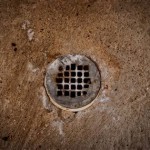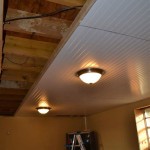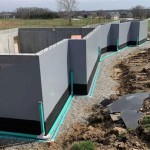How To Keep Water Out Of Basement Window Wells
Basement window wells, while designed to bring light and ventilation into below-ground spaces, can often become significant sources of water intrusion. Proper management of water accumulation in these wells is crucial to preventing basement flooding, mold growth, and structural damage. This article details various methods and strategies for effectively keeping water out of basement window wells and maintaining a dry, healthy basement environment.
Understanding the Problem: Causes of Water Accumulation
Before implementing solutions, it’s essential to understand the common causes of water accumulation in window wells. Several factors can contribute to this problem, including:
Rainfall: Direct rainfall is a primary source of water in window wells. Heavy storms or prolonged periods of precipitation can quickly fill the well, particularly if it lacks adequate drainage.
Snowmelt: In regions with significant snowfall, melting snow can accumulate around the foundation and seep into window wells. This is particularly true during spring thaws when large quantities of snow melt rapidly.
Poor Grading: Improper grading around the foundation is a common culprit. If the ground slopes towards the house, water will naturally flow towards the foundation and into window wells.
Clogged Drains: Window wells are typically equipped with drains that connect to the foundation drainage system. If these drains become clogged with debris, such as leaves, dirt, or small rocks, water will accumulate in the well.
Ineffective or Damaged Window Well Covers: While covers are designed to protect the well from debris and water, they can become damaged or ineffective over time. Cracked or poorly fitting covers will allow water to enter the well.
High Water Table: In areas with a high water table, groundwater can seep into the window well, especially during periods of heavy rainfall or flooding.
Once the source of the water intrusion is identified, targeted solutions can be implemented to address the specific problem.
Effective Strategies for Water Diversion and Drainage
The most effective approaches for managing water in window wells involve diverting water away from the foundation and ensuring proper drainage. Several proven strategies can be employed:
Window Well Covers: Installing high-quality window well covers is a fundamental step. Covers serve to shield the well from direct rainfall, snow, and debris. Select covers made from durable materials like polycarbonate or heavy-duty plastic, designed to withstand the weight of snow and ice. Ensure the cover fits snugly and securely to prevent water from entering.
Grading Correction: Proper grading is crucial for directing water away from the foundation. The ground should slope away from the house at a rate of at least six inches over the first ten feet. This slope encourages water to flow away from the foundation walls and window wells. If the grading is inadequate, regrading the soil around the foundation may be necessary.
Extension of Downspouts: Downspouts should extend at least ten feet away from the foundation to prevent water from pooling near the house. If downspouts are too short, water will saturate the soil around the foundation and potentially seep into window wells. Consider using downspout extensions or underground drainage pipes to redirect water even further away.
Cleaning and Maintaining Window Well Drains: Regularly inspect and clean the window well drains to ensure they are free from debris. Use a garden hose or wet/dry vacuum to remove leaves, dirt, and other obstructions. If the drains are severely clogged, it may be necessary to use a plumber's snake or call a professional to clear the blockage.
Installation of French Drains: In cases where water accumulates excessively due to poor drainage or a high water table, a French drain can be installed. A French drain is a trench filled with gravel and a perforated pipe that directs water away from the foundation. The trench is typically dug around the perimeter of the house or in areas where water tends to pool.
Installation of Sump Pumps (If Necessary): If water infiltration is persistent and significant, a sump pump may be required. A sump pump is installed in a pit within the window well and automatically pumps water away from the foundation when it reaches a certain level. This is particularly effective in areas with a high water table or where drainage is inadequate.
Waterproof Window Well Liners: Applying a waterproof liner to the interior walls of the window well can create an additional barrier against water penetration. These liners are typically made from a durable, waterproof material that is applied to the concrete or metal of the window well. Ensure the liner is properly sealed to prevent water from seeping behind it.
Implementing a combination of these strategies, tailored to the specific conditions of the property, will significantly reduce the risk of water entering basement window wells.
Long-Term Prevention and Maintenance
Preventing water from entering window wells is an ongoing process that requires regular maintenance and attention. Establishing a routine maintenance schedule will help identify and address potential problems before they escalate.
Regular Inspections: Regularly inspect window wells for signs of water accumulation, debris buildup, and damage to covers or drains. Check the grading around the foundation to ensure it is still sloping away from the house. Inspections should be conducted at least twice a year, preferably in the spring and fall, after periods of heavy rainfall or snowfall.
Debris Removal: Consistently remove leaves, dirt, and other debris from window wells to prevent drain clogs and water accumulation. Use a garden hose or wet/dry vacuum to clean the wells thoroughly. Be particularly vigilant in the fall when leaves are falling.
Cover Maintenance: Check window well covers for cracks, damage, or loose fittings. Repair or replace damaged covers promptly to maintain their effectiveness. Ensure the covers are securely attached to prevent them from being displaced by wind or snow.
Drain Maintenance: Periodically flush out window well drains with a garden hose to remove any build-up of sediment or debris. If the drains are slow to empty, use a plumber's snake to clear any blockages. Consider having a professional inspect and clean the drains periodically, especially if recurring problems are encountered.
Gutter Maintenance: Keep gutters clean and free of debris to ensure that rainwater is properly directed away from the foundation. Clogged gutters can cause water to overflow and saturate the soil around the house, increasing the risk of water intrusion into window wells. Clean gutters at least twice a year, or more frequently if necessary.
Monitoring Soil Conditions: Monitor the soil around the foundation for signs of excessive moisture. If the soil is consistently damp or muddy, it may indicate poor drainage or a high water table. Consider implementing additional drainage solutions, such as French drains or a sump pump, to address the problem.
Professional Consultation: If water infiltration problems persist despite implementing these strategies, consult with a professional foundation specialist or waterproofing contractor. They can assess the situation, identify the underlying causes of the problem, and recommend appropriate solutions. They may use specialized equipment, such as cameras or moisture meters, to diagnose the issue accurately.
By implementing these preventative measures and maintaining a consistent maintenance schedule, it is possible to minimize the risk of water accumulation in basement window wells and protect the basement from water damage.
Effective management of water in basement window wells is a multifaceted process that requires a comprehensive understanding of the potential causes, strategic implementation of preventative measures, and consistent ongoing maintenance. Addressing these issues proactively will contribute significantly to the long-term health and stability of the building's foundation and the comfort and safety of the interior environment.

How To Prevent Flooding Through Basement Window Protect All Glass Block Windows Nationwide Supply Cleveland And Columbus Ohio

How To Stop Water Coming In Your Window Well

Are Your Window Wells Filling With Water Well Experts

How Do You Keep Water Out Of Your Window Wells

Leaking Window Wells And What To Do About Them News Events For Basement Systems Inc

Being Well Aware How To Clean Out Window Wells Racine County Eye

Here S How To Address A Basement Window Well That Leaks When It Rains The Seattle Times

How To Stop Your Basement Window From Leaking Well

Leaking Window Wells And What To Do About Them News Events For Basement Systems Inc

How To Fix A Window Well That Fills With Water Gj Macrae
Related Posts







